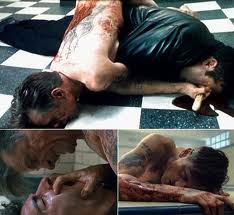 1. Studios Must Pander to Teenagers and Below. Teenagers, especially teenage boys, buy most of the tickets in this country and around the world. Once a movie gets above a certain budget it must cater to them, if it wants to make its money back. The trend has been going on so long its further driven the adult market away from multiplexes. If you’re wondering why most Hollywood movies are brainless and enjoy cartoon violence mixed with easily impressed women, it’s because that’s what teenage boys get off on. The next biggest market is children. Cable and Pay Television tends to be more adult and attracts better writing/directing.
1. Studios Must Pander to Teenagers and Below. Teenagers, especially teenage boys, buy most of the tickets in this country and around the world. Once a movie gets above a certain budget it must cater to them, if it wants to make its money back. The trend has been going on so long its further driven the adult market away from multiplexes. If you’re wondering why most Hollywood movies are brainless and enjoy cartoon violence mixed with easily impressed women, it’s because that’s what teenage boys get off on. The next biggest market is children. Cable and Pay Television tends to be more adult and attracts better writing/directing. 2. Indy Films Must Concentrate on Character/Acting/Writing. These things must be adult and deeper in indy film because they can’t compete with studio films on huge ticket items like special effects. If they have name stars, the stars will usually be working at a reduced rate because they like the script/character/filmmaker. The good ones will take a huge paycut and work for peanuts, for an artistic challenge or something that inspires or at least interests them, even though they know the film won’t be widely seen. Instead of being a pampered star, Charlize Theron actually went out and raised money for Monster, she believed in the script and director so much.
2. Indy Films Must Concentrate on Character/Acting/Writing. These things must be adult and deeper in indy film because they can’t compete with studio films on huge ticket items like special effects. If they have name stars, the stars will usually be working at a reduced rate because they like the script/character/filmmaker. The good ones will take a huge paycut and work for peanuts, for an artistic challenge or something that inspires or at least interests them, even though they know the film won’t be widely seen. Instead of being a pampered star, Charlize Theron actually went out and raised money for Monster, she believed in the script and director so much.3. The Larger the Budget, the Smaller the Creative Risk. No one wants to take risks with huge sums of money, that’s human nature (we're seeing this tragically right now, in the tepid political response to the economic crash). It’s much easier to make a risky bet for one dollar or even a million than on a 150 million dollar blockbuster (the very minimum it takes to release a picture globally these days). The result is often formulaic and dull, pandering to the lowest common denominator or mediocrity by committee. Indy films are small entrepreneurs or local restaurants (not chains), they can afford to do things their way and put a lot of thought and care into them. It’s the difference between a meal prepared by a chain and one prepared by a chef.
4. No Teenagers in Audience or Screaming Children. See reason 1.
 |
| Nell Ruttledge in Prince of Swine |
 |
| One of the best fight scenes of the decade, David Cronenberg's Eastern Promises |
No comments:
Post a Comment